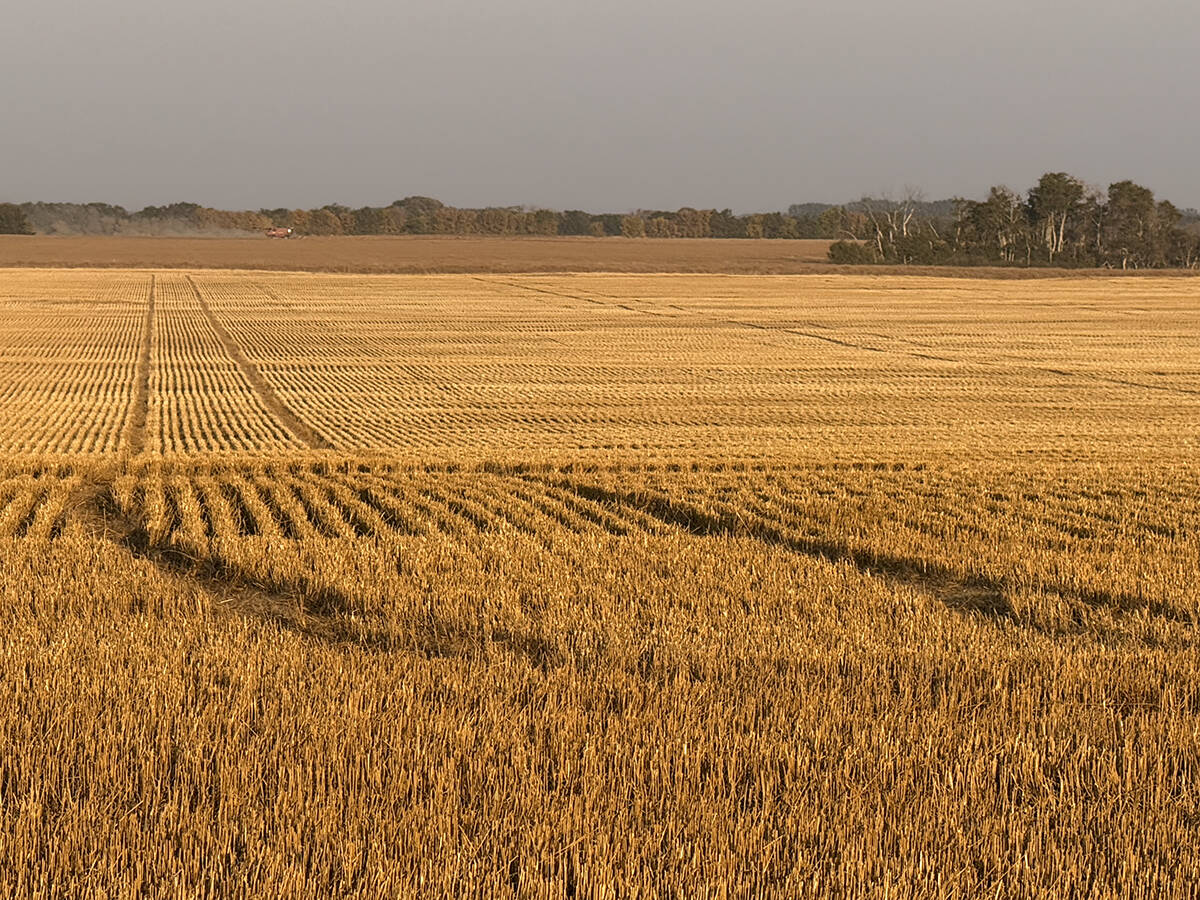Some farmers may consider it routine to find a half eaten leg of a cow on the lawn, dragged there by the family dog . But it often comes as a shock to acreage owners or other farmers.
That’s when Camrose County agriculture fieldman Dave Trautman gets a call from an angry landowner.
“I would get a complaint launched on the basis that they saw something from a road. It might be a carcass or multiple ones or pieces of carcasses drug onto their property from their neighbour’s dog or by their own dogs or coyotes,” he said.
Read Also

Final crop reports show strong yields, quality
Crops yielded above average across the Prairies this year, and quality is generally average to above-average.
It’s no different across the province, Brian Koberstein of the livestock engineering unit of Alberta Agriculture told producers during an information session at the Canadian Bull Congress.
“The majority of calls come back to somebody seeing things they didn’t think was appropriate: a carcass, a bone or getting a whiff,” said Koberstein.
The complaints are usually valid, he said. When there’s a complaint, it’s because the livestock owner usually hasn’t followed the industry code of practice or regulations for disposal of dead animals.
In 2001, there were 79 complaints to Alberta Agriculture’s prevention investigation unit about the improper disposal of livestock. All except one were valid. In 2002, there were 62 complaints and all were legitimate, said Koberstein.
In 2005, there were 152 investigations. All were legitimate and one charge was laid and it is going through the courts, said Floyd Mullaney of the inspection investigation branch in Red Deer.
It’s not just acreage owners that complain, said Mullaney.
Often complaints come from feuding neighbours or producers who follow the rules and believe everyone should.
When Mullaney’s office gets a complaint, staff first tries to educate producers about the rules. If that doesn’t work, the regulations are enforced through court.
“We go out and try and educate people first and create an awareness and attempt to seek voluntary compliance.”
The increase in investigations is a direct result of BSE because after it was first discovered, companies began charging for carcass pickups and some producers are not willing to pay.
Mullaney said despite the charge for picking up animals, rendering is still the main way producers get rid of their dead animals. The second is farm burial pits, he said.
With concern about diseases like BSE or avian influenza, there is a growing intolerance for dead animals being dragged into the bush and left to rot or be eaten by coyotes.
“When you can see dead hogs in a yard from driving down a highway – come on, that’s not good for anyone,” Koberstein told the group.
In Alberta, there are five main ways to get rid of dead livestock.
They can be burned, buried, rendered, composted or left for natural disposal, but they all have rules.
Livestock owners have 48 hours to deal with their animals, including burying them. The weight of the dead animals must not be more than 2,500 kilograms in a single pit and it must be at least 100 metres from water, a residence, livestock facility or a secondary highway and 50 metres from any other road allowance. The hole must be one metre above the water table and have at least one metre of clay cover.
“You can’t have a big hole where you pump your dead in for three years,” Koberstein said.
Animals can also be burned, but there are strict emission standards.
Koberstein spent 18 months designing regulations on composting cattle. Under current rules nothing can be composed that weighs over 100 kg and few people are willing to cut cattle into 100 kg pieces for compost.
During his time on the compost project, Koberstein learned that composting cattle is a viable alternative that does work. But he doubts it will ever become a sanctioned disposal method because BSE can survive composting. Few people are willing to say the compost is free from prions that won’t make it back into the food chain by the uptake of a plant, he said.
“It’s a risk to the industry, it’s a risk to the environment.”
Depending on the size of operation and location of a rendering facility, rendering is used by most large feedlots and operations.
Small operations tend to use the natural disposal method and that brings in most of the complaints, he said.
“The regulation guys despise this. It’s a picket producers can hide behind. The reason natural disposal is still in is it would have been political suicide if our government had taken it out,” he said.
Natural disposal means taking a dead animal to an area on the farm where it can be scavenged by other animals. This method also has rules. The animal must not weigh more than 1,000 kg, there must be 500 metres between disposal sites and the site must be at least 500 metres from water sources and 25 metres from the edge of a coulee. It must also be 400 metres from any livestock facility, pastures, houses, road allowance or land owned by another person.
“The smaller operations are using natural disposal, probably more than preBSE,” said Koberstein because of the cost of picking up the carcass.
There are ways of lessening complaints, he said.
“Your neat and tidy yard smells less.”














